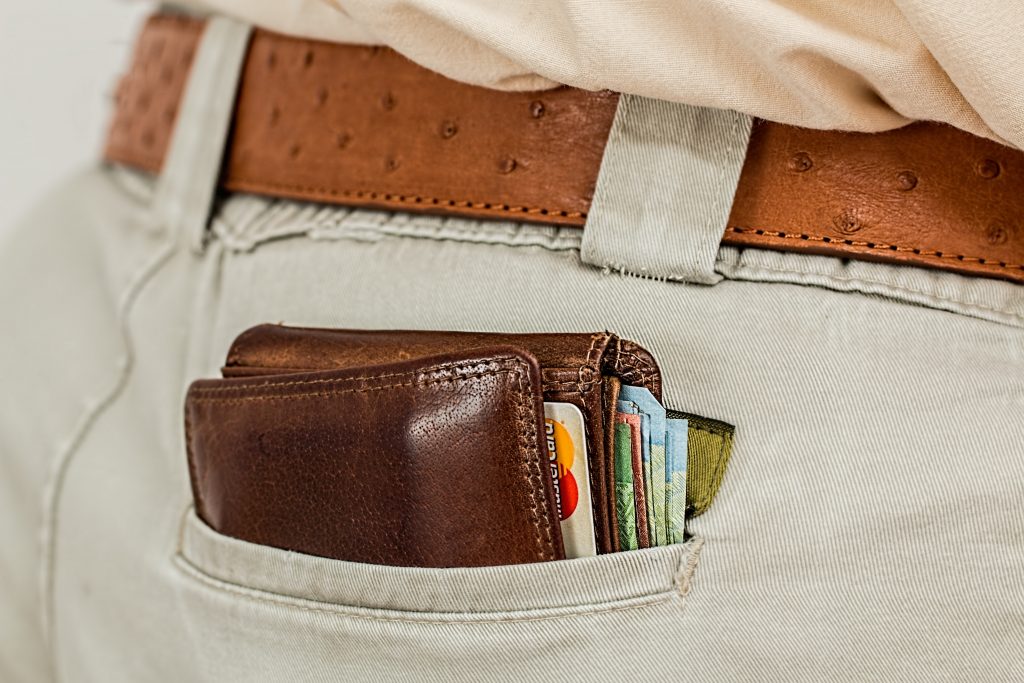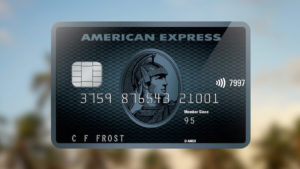We talk a lot on Point Hacks about using your reward points for travel, particularly premium travel experiences. This is, in our opinion, the best value method of using your points.
However, there are some people who aren’t chasing travel experiences, and simply want to absolutely get the most return from their spend in cash.
If that’s you, using your reward points for cash back (or cash equivalents, like vouchers) can make sense as a way to stretch the budget.
What are the considerations if using a points credit card for cashback reward goals?
One of the key issues to keep in mind when using a credit card to earn points for cashback, is that most points earning cards come with an annual fee. If you’re using your points for premium travel as we recommend, you can usually make this fee worthwhile for the value of the travel you’re planning.
When using your points for cashback, you’re already behind until you earn enough points to cover the value of the annual fee, unless you have a way to offset this. For the most part, this means using a low earning annual fee free card (which I’ll cover a few of).
If you’re going to use a credit card for cashback, remember to make sure you pay the full closing balance on your statement by the due date. If you don’t you’ll get interest charges which are going to quickly outweigh any cashback benefit.
There’s one card in particular that comes out as a clear winner from my analysis when it comes to cashback – both because the rate at which it can earn cash back is relatively high; and it’s (admittedly, not small) annual fee is effectively offset every year with a travel credit – the American Express Explorer.
How to earn 1.00% cashback from the American Express Explorer Credit Card
The American Express Explorer card earns you two Membership Rewards points per dollar you spend on almost everything – the primary exclusion is government transactions, which include the ATO, and for some reason, the Post Office – but not state owned utilities like water or electricity.
Given the transfer rate of 20000 points = $100 in cashback, this means a Membership Rewards point is worth 0.5c in cashback.
Putting this into real terms, it means that when converted to a statement credit, you get a rate of 1.00% cashback on this account. The fact that this is on almost every purchase means that you could get more cashback than previous offers on other products, which often came with caps on transaction amount or the total amount of cashback as an introductory offer.
The card does have a $395 annual fee, which is quite steep. However it also comes with a $400 travel credit to use every year, which for most people would offset the annual fee.
The travel credit can be used for anything you can book on the Amex Travel website, not just the high-end travel we talk about on here. Amex Travel has the same range as most online travel agents so you could just as easily book a business class flight or a five star hotel in Hong Kong, New York or Tokyo; as a chalet for a family holiday in a caravan park two hours drive from home (“down south” as we’d say here in Perth).
Given most people I know would go on a holiday somewhere at least once a year, and the wide range of redemptions options on the Amex Travel site, I would think that almost everyone would use this and in doing so offset the annual fee.
You turn your points into cashback by selecting a transaction to “pay for” using your points – the easiest way is using the mobile app.
Every so often there are promotions that increase the value of points for certain types of purchases – for example I’ve previously seen an offer of 15% extra value for paying for Woolworths purchases with points – and there’s currently an offer running that increases the value of points by 30% for purchases eligible for last month’s Shop Small promotion.
This makes the value of your points at 0.963c each, or gives you a 1.926% cash back value if you stockpiled your points and waited for an offer like this (of course, just because it’s happened the last couple of years, doesn’t mean it’s guaranteed to happen again).
This, of course, doesn’t include the cashback you get from the Shop Small promotion itself, or other Amex Offers, which can be quite lucrative if you can use them for spending you’d otherwise make.
Other American Express cards
There’s a couple of other cards issued by American Express that are worth a look if the Explorer card isn’t your thing:
American Express Platinum Edge
This card earns into the Membership Rewards Ascent program, which has a better rate for converting to frequent flyer points, but curiously, a slightly lower value on points for converting to cashback (1 point = 0.7c).
It has a tiered points earn scheme as follows:
- 3 points per dollar on supermarket and petrol stations (1.5% cashback)
- 2 points per dollar spent in foreign currency and online (1.0% cashback)
- 1 point per dollar everywhere else (0.5% cashback), except for
- 0.5 points per dollar on government spending, insurance, telecommunications and utilities (0.25% cashback)
If your household spend on supermarkets and fuel is higher than your spending everywhere else, this wouldn’t be a terrible card to have to multiply your points earning capability. The 0.5 points category hurts your ability to earn points through your big bills though – it’s a trade-off.
This card comes with a $195 annual fee, offset by a $200 travel credit.
Other (non-Amex) cards
While I find that the vast majority of my spending (in a dollar figure at least) is with merchants who accept American Express cards, there are some places that don’t. This is where you need a backup Visa or Mastercard.
Unfortunately I haven’t come up with any great options in this space.
Unlike American Express, I haven’t found any credit cards that can give you cashback directly as a statement credit, but on the figures that nearly every Australian family spends money at a supermarket, a supermarket discount gift card is close enough to cash equivalent.
There’s three major programs to look at in Australia, and I’ve taken their points values in this case from the number of points needed to redeem a gift card or discount.
- Flybuys: direct discounts at Coles of 2000 points = $10. 1 flybuys point = 0.5c
- Qantas: $100 Woolworths e-gift card costs 19650 points. 1 Qantas point = 0.508c
- Velocity: $100 Coles gift card costs 19500 points. 1 Velocity point = 0.512c
Credit Cards
One of the better cards around, solely in terms of cashback, would be the Coles Rewards Mastercard. Earning flybuys at a rate of 2 points per dollar, that’s a clear 1% cashback equivalent.
However with an annual fee of $89, you would have to spend $8900 per year on the card just to break even before you start seeing any benefit.
You could consider the Coles No Annual Fee Mastercard, but earning 1 flybuys point for every $2 spent, makes a rate of 0.25% cashback equivalent. Hardly compelling, but better than nothing.
The tipping point (I did the maths) between these two cards is spending $11867 per year. To put nicer figures on it, if you know for sure that you’re going to spend more than $1000 per month the Coles Rewards card is worth it even with the annual fee.
If you’re not spending that amount, or you want to avoid annual fees completely, along with the Coles No Annual Fee card there’s a few other cards worth a look.
Prepaid cards
These are prepaid cards, meaning you’re spending money you have pre-loaded on them, there’s no line of credit (so no danger of missing a payment, and no credit check), but it means you lose any benefit from interest free days between making a purchase and paying your statement.
- Qantas Travel Money: 1 Qantas point per $4 spent (so 0.127% cashback equivalent). See our guide to Qantas Cash here.
- Velocity Global Wallet: 1 Velocity point per $3 spent (so 0.170% cashback equivalent). See our guide to Velocity Global Wallet here.
Which of these you choose will depend on whether you place more value on a higher value cash equivalent reward (Qantas or Velocity) – and then whether you prefer redeeming vouchers for Coles or Woolworths; or earning rewards quicker (Coles) – seeing as you only need 2,000 flybuys points to redeem a reward.
Summing up
American Express with the Explorer card offer a compelling option for cashback on everyday spending, particularly when you can earn this on every purchase and on most of your household bills too.
While there are options for Visa and Mastercard cards, they have a low earn rate but can be useful for picking up the odd spend where Amex isn’t accepted.
Don’t forget though – cashback is a very poor value way of using your points. We think we can do much better by planning travel redemptions using rewards points – but this does take more time, effort and headspace to accomplish.






By my calculations, the cashback yield from Amex Explorer went from 1.48% to 1% (for non-government purchases) 20,000 = $100
Having a look at the rates again, it appears they changed from the time I wrote this guide. It is now 20,000 points for $100 cashback, and therefore your calculation of 1.00% yield is correct.
I have since updated the article.
Thanks for bringing this to our attention!
1% cashback (up to $30 per month) with a $149 annual fee.
Thanks for bringing this to our attention.
Having a look at the rates again, it appears they changed from the time I wrote this guide. It is now 20,000 points for $100 cashback, and therefore the yield is 1.00% and not 1.48%.
I have since updated the article.
Thanks for bringing this to our attention!